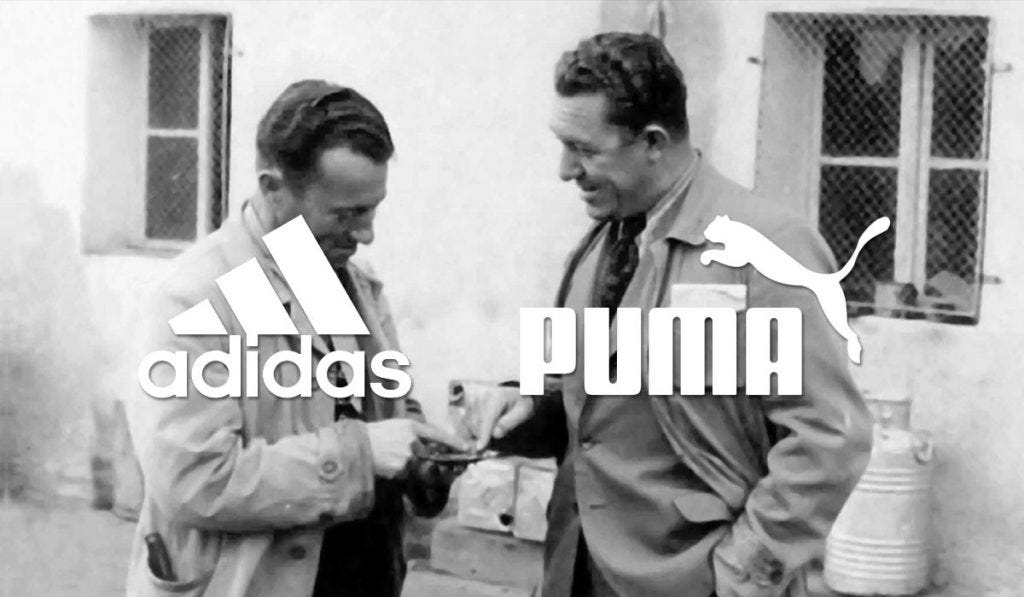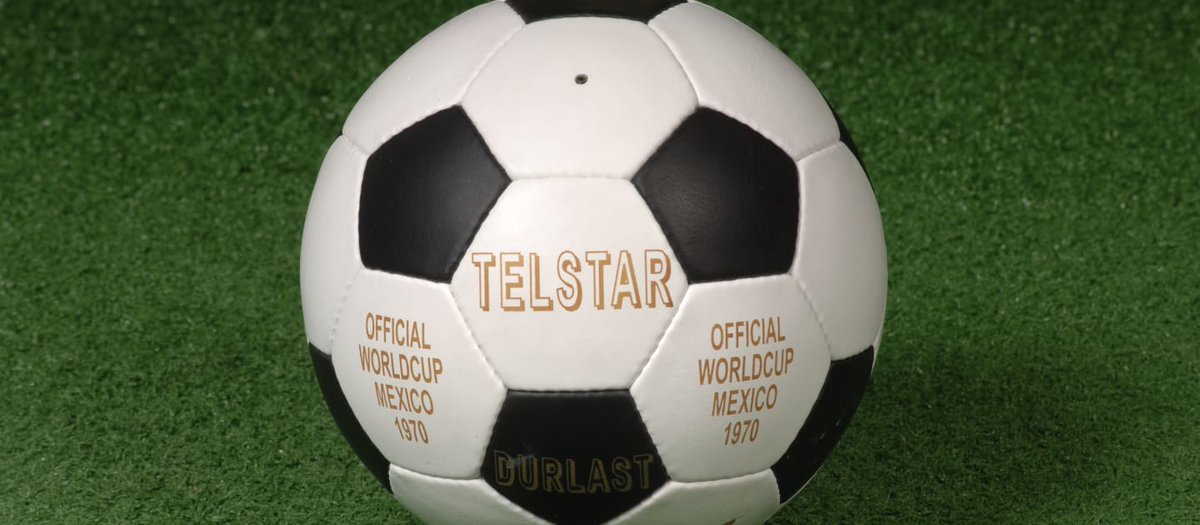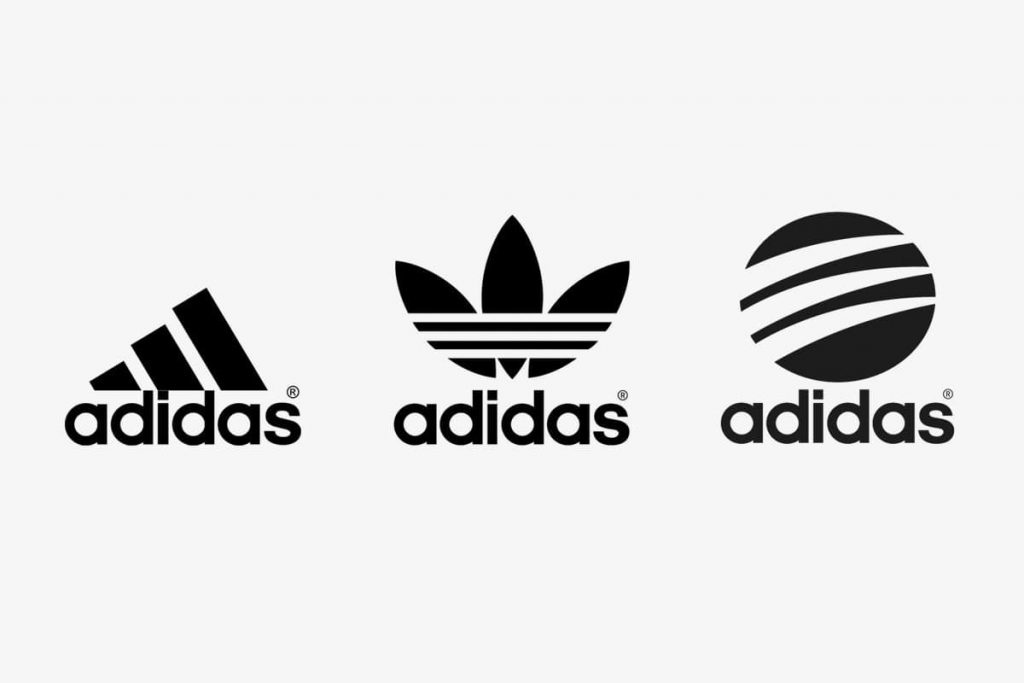
Brand Identity Timeline: A Look into the Rise of Adidas
Today, Adidas is known as one of the largest sportswear manufacturers in the world, but this was not always the case. The story of Adidas began in 1924 when Adolf “Adi” Dassler and his elder brother Rudolf Dassler dove into the business of shoe making from the depths of their mother’s scullery. At the time, Adidas was not known as “Adidas.” Rather, they went by a different name—the Dassler Brother Shoe Factory.
The brothers went on to set their first few successful milestones that ranged from providing the 1924 Gold Medalist Lina Radke to assisting in the development of the spiked running shoes for multiple athletic events. During the 1936 Summer Olympics, Adi Dassler had gifted the U.S. sprinter Jesse Owens one of his own handmade spikes to use. As a result, the Dassler brand began to receive more recognition around the world.
In 1947, the Dassler brothers split up due to a personal disagreement. The brothers branched off, forming companies of their own whilst remaining in the sportswear industry. In 1948, the elder Dassler brother, Rudolf, had gone off and formed his own company then known as Ruda, which was later rebranded to the more widely recognized Puma of today. Meanwhile, Adi Dassler formally formed a company of his own and registered it under the name Adidas AG (an abbreviation of his own name) just a year later on August 18th, 1949.

In 1952, Adidas registered its first out of the many logos used to represent its brand—the three stripes. Dassler had intended to register the 3-stripes logo as a trademark of his brand only to learn that the 3-stripes logo had already been registered under the Finnish sportswear brand, Karhu Sports. With some luck, Dassler was able to acquire the 3-stripes logo through a trade of two bottles of whiskey and the equivalent of 1600 euros at the time.
In 1970, Adidas worked with the FIFA World Cup. In order to improve visibility of the ball during soccer matches displayed on black and white television, Adidas had both designed and delivered the TELSTAR soccer ball to the 1970 FIFA World Cup. This consequently resulted in Adidas’ delivery of the official match ball for every FIFA World Cup thenceforth.

Adidas’ second logo, the trefoil design, emerged due to a rebranding campaign in 1971. At the time, each leaf of the trefoil was meant to symbolize North America, Europe, and Asia—the three continents that Adidas shoes were sold in. Presently, the trefoil is associated with the Adidas Originals collection which have symbolized performance in the past. Now, instead represents lifestyle and street.
On September 6th, 1978, Adi Dassler passed away, leaving the company behind for his son, Horst Dassler, and his wife, Kathe Dassler. Horst Dassler’s reign over the sportswear empire was short lived, however. Three years after his mother’s passing, Horst followed suit in 1987, leaving the company to become a stock corporation. Adi Dassler’s daughters resolved to sell their shares in 1990 and exited the company after doing so. With so many changes in leadership, the company faced bankruptcy until being rescued by their then new CEO, Robert Louis-Dreyfus, and brought back into popular demand in 1993.
In 1997, Adidas changed its name to Adidas-Salomon AG as a result of their acquisition of the Salomon Group, which included brands such as TaylorMade, Mavic, and Bonfire. Herbert Hainer became the new CEO in 2001 and continued his efforts into innovation. From his efforts, ClimaCool, Adizero, and the F50 Football Boot were launched.
At the same time, Adidas began to branch out into streetwear apparel and opted to collaborate with Yohji Yamamoto (2001) and Stella McCartney (2004) to promote their new campaign. David Beckham and Haile Gebrselassie joined to promote one of Adidas’ largest marketing campaigns in history “Impossible? Just a Big Word” which centered on the idea of facing one’s fears, defeats, and challenges head on to disprove impossibility.
In 2006, the Salomon Group exited the Adidas team when the group and its brands were sold to Amer Sports. In turn, Reebok joined just one year after these events and with it came the brands: Rockport and Reebok-CCM Hockey. Adidas was once again known as Adidas AG. In 2011, Adidas acquired Five Ten footwear.
Brand Identity: Adidas’ Logos

The most recognizable aspect of Adidas’ many logos are its 3-stripes. However, those 3-stripes had not always been the trademark of Adidas. Dassler did not start off Adidas with the intention of having the 3-stripes representative of his company’s logo. In fact, the stripes that had been placed on some of the earlier shoe designs served a functional purpose to stabilize the spikes of the cleats. Dassler had experimented with the design of the shoe having it range from 2 to even 4 stripes on each shoe. Eventually, the 3-stripe logo was acquired through Dassler’s trade with Karhu Sports.
The 3-stripes motif then branched out into other logos that were each meant to be representative of different aspects: the trefoil design (casual apparel and shoes), the mountain design (performance line), and the circle (style collections). The trefoil design is often associated with the large success of the 3-stripes company as the design appeared on the back of the Superstar shoes worn by Run DMC, which garnered much popularity for the brand. The mountain design is featured on products meant for performance for professional athletes, and it promotes the messages of “the challenge to be faced” and “the goals to be achieved” when wearing products from the performance line. Lastly, the circle design is featured in products created in collaboration with famous designers such as Yohji Yamamoto.
Brand Identity: Adidas’ Marketing Strategy and the Message Behind It
Adidas’ success can be credited to the hard work and perseverance of Adi Dassler in the 3-stripes company early years. In 1924, the German Runner Lina Radke became a gold medalist while wearing the Dassler shoes. Consequently, this propelled the company on its way to the beginning of its success.

Similarly, in 1936 Adi Dassler had gifted the U.S. sprinter Jesse Owens one of his own handmade spikes to use, and when Owens had emerged victorious with 4 gold medals, the brand’s popularity grew once again.
Moving forward to the present, while Adidas’ marketing strategy has become more refined, it remains to be a company that appeals to athletes. In these modern times, campaigns such as the I’MPOSSIBLE movement was launched to empower women and break the limitations society has placed on women with the word “impossible.” Adidas also explores sustainability in its End Plastic Waste campaign. In each one of these marketing strategy, Adidas opts to appeal to its audience through inspiration. In the case of the I’MPOSSIBLE movement, Adidas is appealing to women and inspiring female empowerment. In the case of the End Plastic Waste campaign, Adidas appeals to its global audience by calling them to action to take a stand against waste and work towards sustainability. At the same time, doing so also cleverly places the 3-stripes company in a good light, building up their reputation.
Works Cited
“History.” Adidas, https://www.adidas-group.com/en/about/history/.
“Story of Adidas – Article.” Historydraft, 1 Jan. 2020, https://historydraft.com/story/adidas/article/418.
Maguire, Joseph Anthony , Rowe, David Charles , Guttmann, Allen and Thompson, William N. “sports”. Encyclopedia Britannica, 16 Sep. 2021, https://www.britannica.com/sports/sports. Accessed 8 March 2022.


